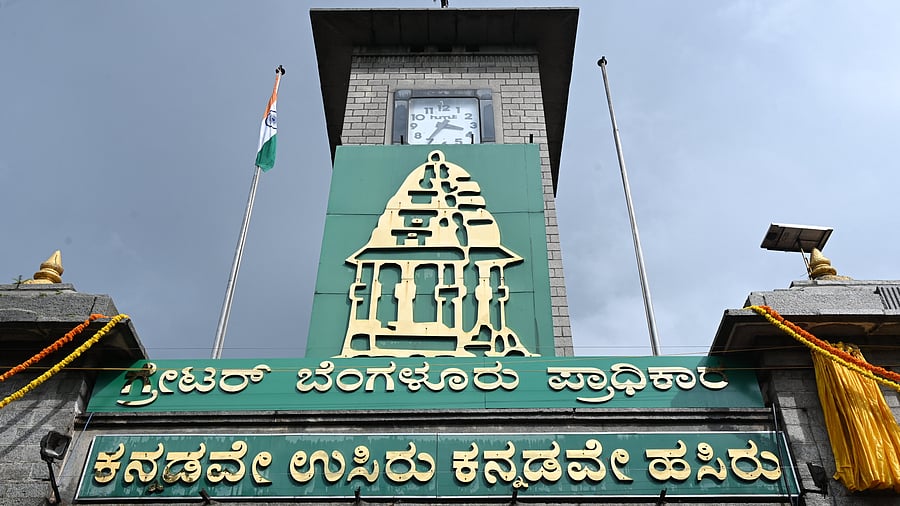
GBA headquarters
Credit: DH Photo
Bengaluru: With members of 2.28 lakh households in the Greater Bengaluru Area (GBA) enumerating themselves in their ‘native’ places, and 10 districts crossing 100 per cent coverage during the recent Social & Educational Survey, the theory of a steady migration within Karnataka towards the state capital may gain more currency.
Mandya (110.23 per cent), Tumakuru (106.88 per cent), Haveri (103.68 per cent), Chitradurga (103.56 per cent), Chikkamagaluru (102.64 per cent), Udupi (102.4 per cent), Gadag (100.65 per cent), Koppal (100.46 per cent), Davanagere (100.43 per cent) and Chamarajanagar (100.33 per cent) were the 10 districts where more people were enumerated than the district’s population as per the estimates by the Directorate of Economics and Statistics (DES).
The aforementioned 2.28 lakh households in Bengaluru may roughly translate to 9 lakh people, assuming each house comprises four persons on an average.
According to data from the Karnataka State Commission for Backward Classes (KSCBC), 5.62 lakh people more than the DES estimates were enumerated in the 10 districts with over 100% enumeration.
This could possibly mean that a significant share of the 2.28 lakh families who registered from ‘natives’ could’ve been from these 10 districts.
According to DES estimates, seven of the 31 districts in the state (Mandya, Tumakuru, Chikkamagaluru, Udupi, Chamarajanagar, Hassan and Kodagu) had a lesser estimated population in 2025 than the corresponding figures in the 2011 census. Among them, five districts, except for Kodagu and Hassan, recorded over 100 per cent enumeration.
According to sources, the reduced estimated population in some districts could be due to increased migration towards Bengaluru for livelihood opportunities and even matrimonial reasons.
“Migration is one of the aspects we will keep in mind since we had questions based on that. But it’s too early to draw conclusions. We will analyse the data next month,” KSCBC Chairman Madhusudan R Naik said.
A source in the DES explained that these estimates are derived from the national-level projections by the Technical Group on Population Projection, which estimates Karnataka’s population to be 6.85 crore in 2025.
“After taking the state population as 6.85 crore, we first estimated the population in Bengaluru (GBA + non-GBA parts of Bengaluru Urban). This is done by considering an approximate 2.5% annual increase, since the population of the state capital keeps increasing.”
The 2025 estimate of Bengaluru population is 1.31 crore — 1.16 crore in GBA + 15.46 lakh in non-GBA parts of Bengaluru Urban.
The source explained that the population was estimated based on the figures from the 1991, 2001 and 2011 census exercises, although “adjustments” were made for Bengaluru Urban and Bengaluru South (previously Ramanagara) districts.
“A weighted average of these differences in shares has been computed with weightage of 1 for 2001 to 1991 and 3 for 2011 to 2001,” a document by the DES said.
This emphasises that the data from 2001-2011 carries greater significance since it’s more recent.